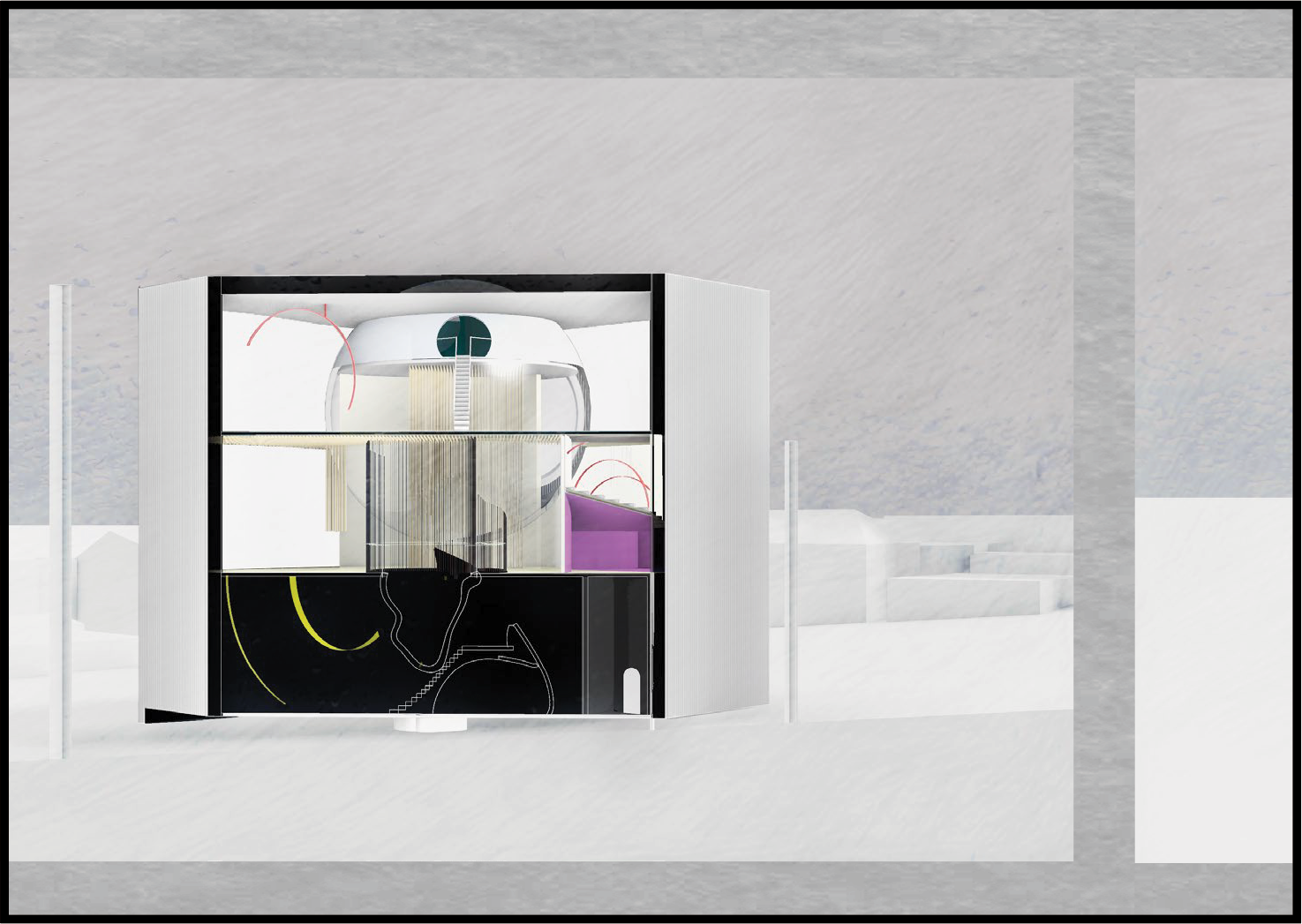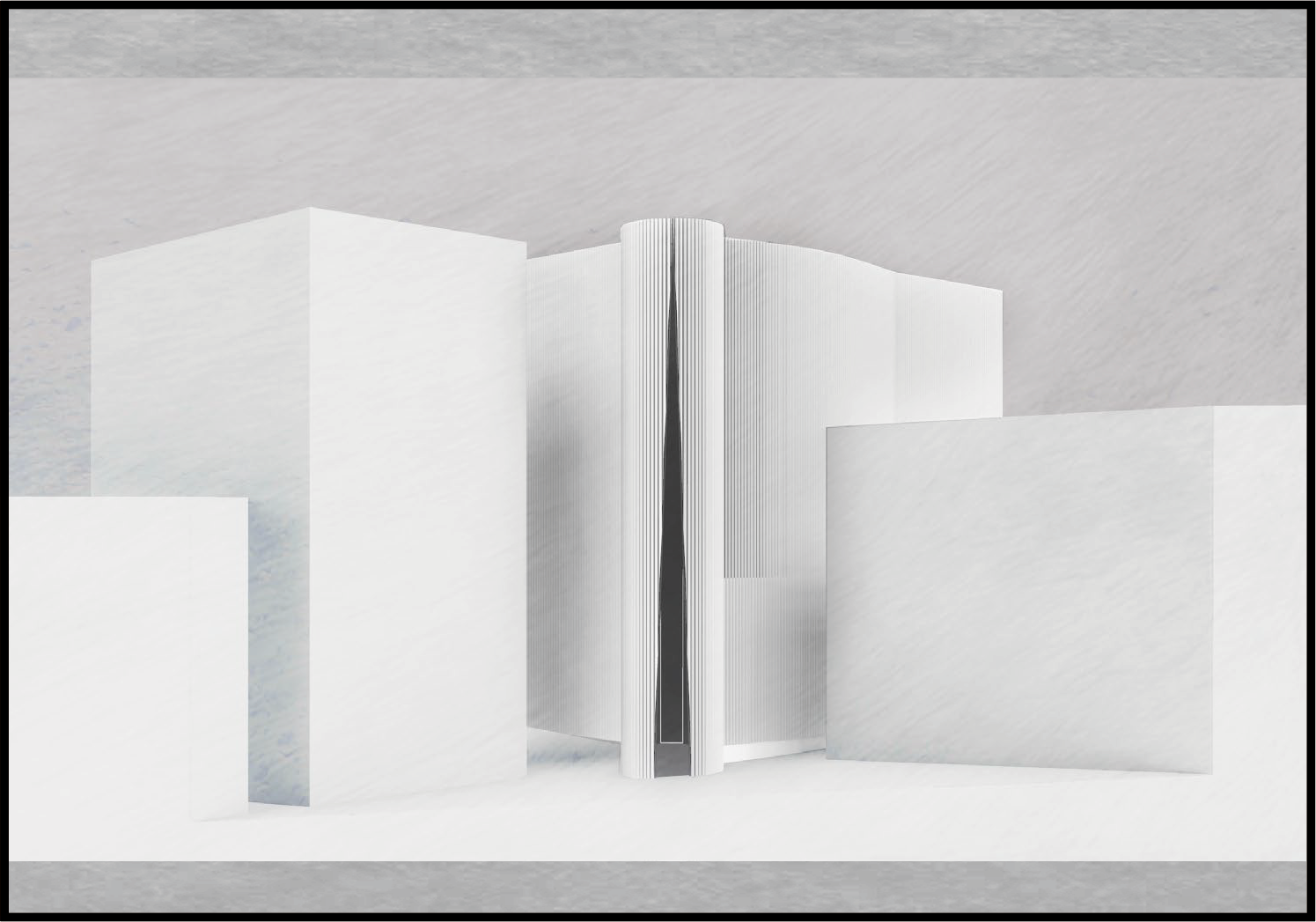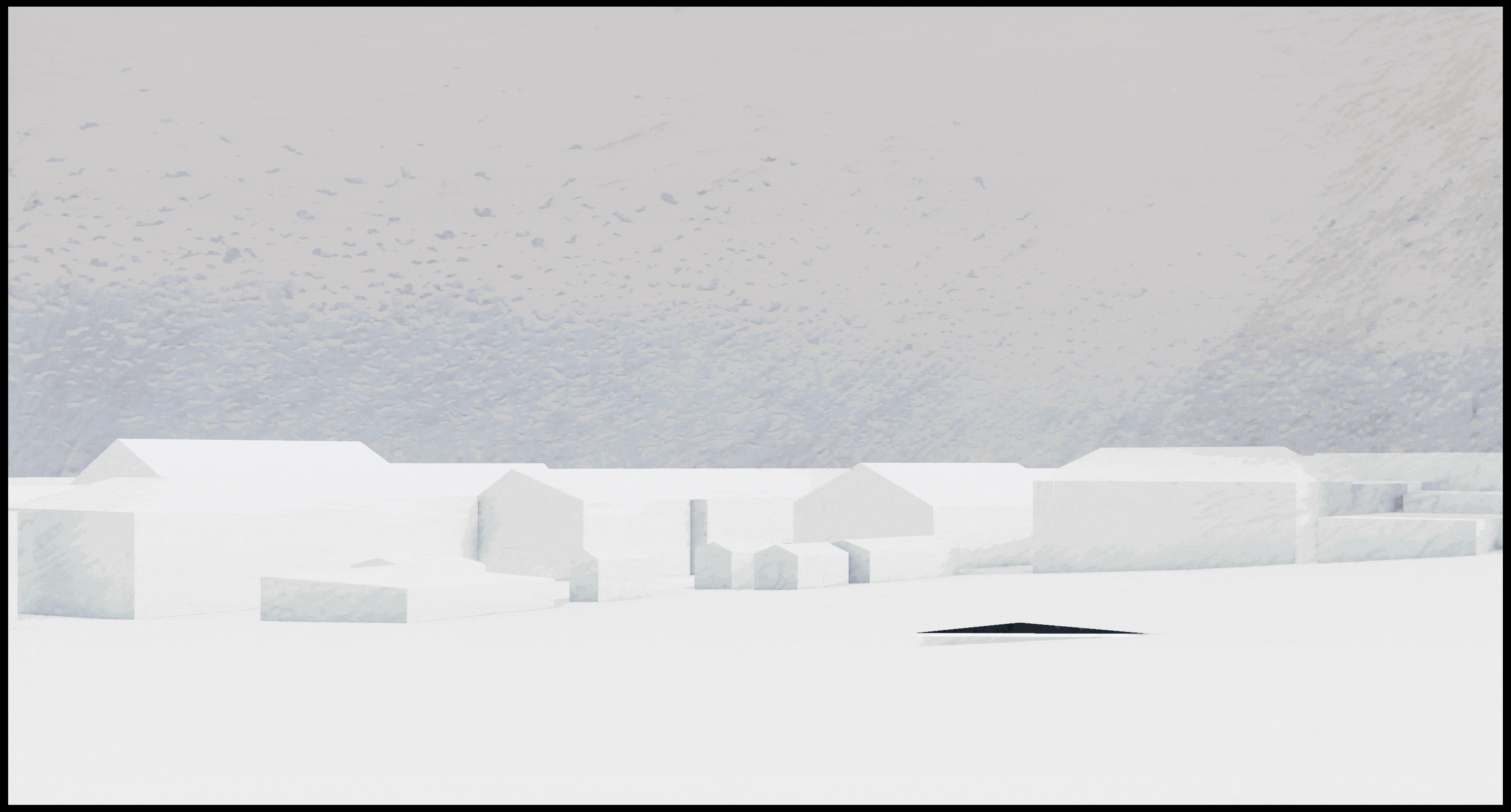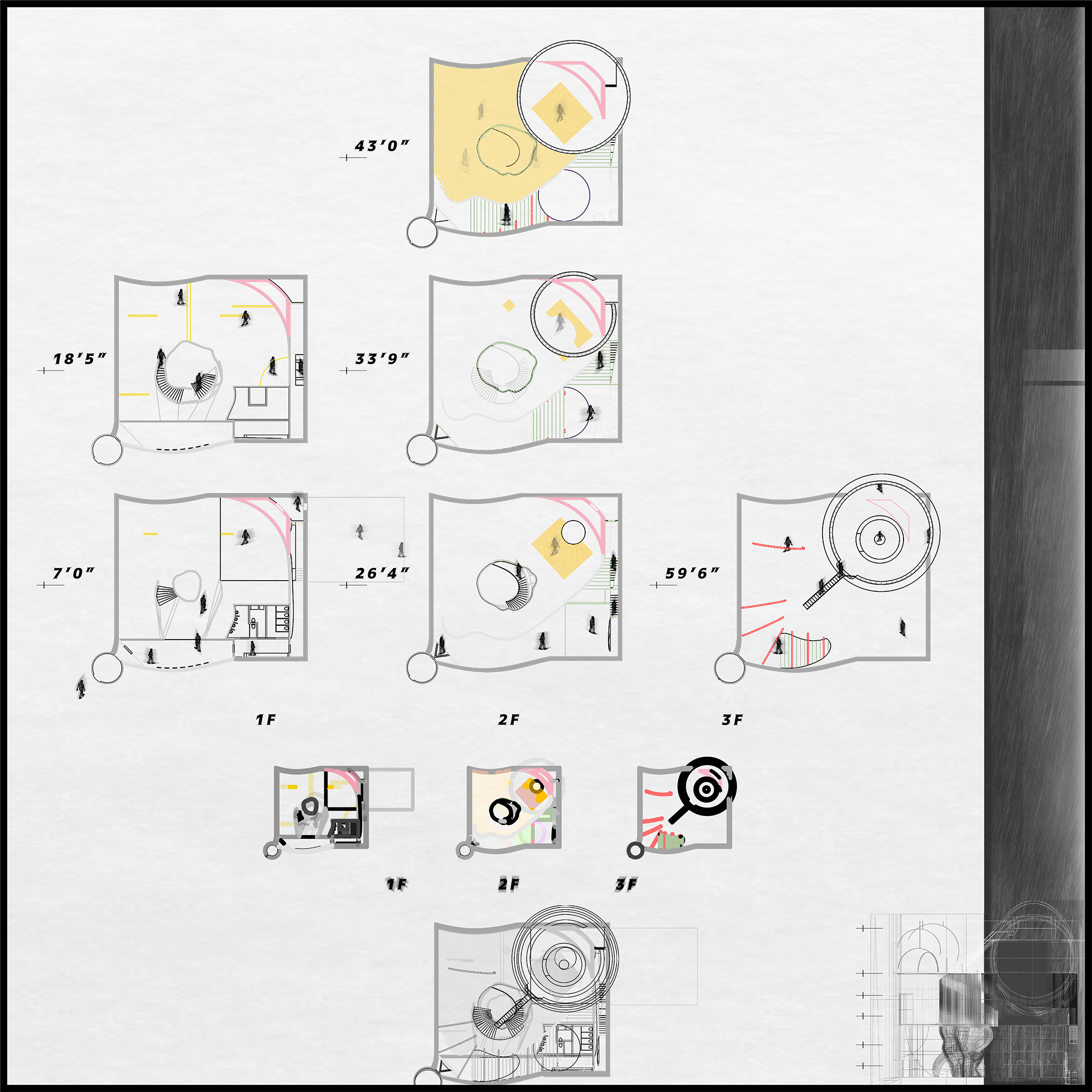⌻◘ DREAM DIMENSION Undergraduate Thesis
2020 - 2021
“Dream is destiny.”
—Waking Life (2001) dir. Richard Linklater
The Dream Dimension 方円の恍惚 、夢の次元-
The building is enveloped with a skin of brushed corrugated stainless steel, protecting the private realm within. The entrance is oriented toward the alleyway among the shops and houses and the exit is on the opposite corner diagonally. Inside the architecture, spaces are determined with guides built up with squares and circles since in most Eastern Asian cultures, squares and circles represent being and non-being, and the architecture of “in-between” is intended to be a dialogue of the two.
![]()
The architecture of the mind’s eye-
On the inside, it is a curated REM-dream-like experience of a series of 18 “rooms” through the space of “in-between”, blurring the boundaries between the real and the unreal and immersing visitors in a dimension between being and non-being.
Earlier studies of color synesthesia, brain cognitive functions, states of consciousness, and more have provided resources for architectural elements to take shape, generating dialogues among contradictions and creating an architectural experience that stimulates hyper-consciousness of one’s inner and outer environment.
![]()
![]()
![]()
![]()
![]()
![]()
![]()
The building is enveloped with a skin of brushed corrugated stainless steel, protecting the private realm within. The entrance is oriented toward the alleyway among the shops and houses and the exit is on the opposite corner diagonally. Inside the architecture, spaces are determined with guides built up with squares and circles since in most Eastern Asian cultures, squares and circles represent being and non-being, and the architecture of “in-between” is intended to be a dialogue of the two.
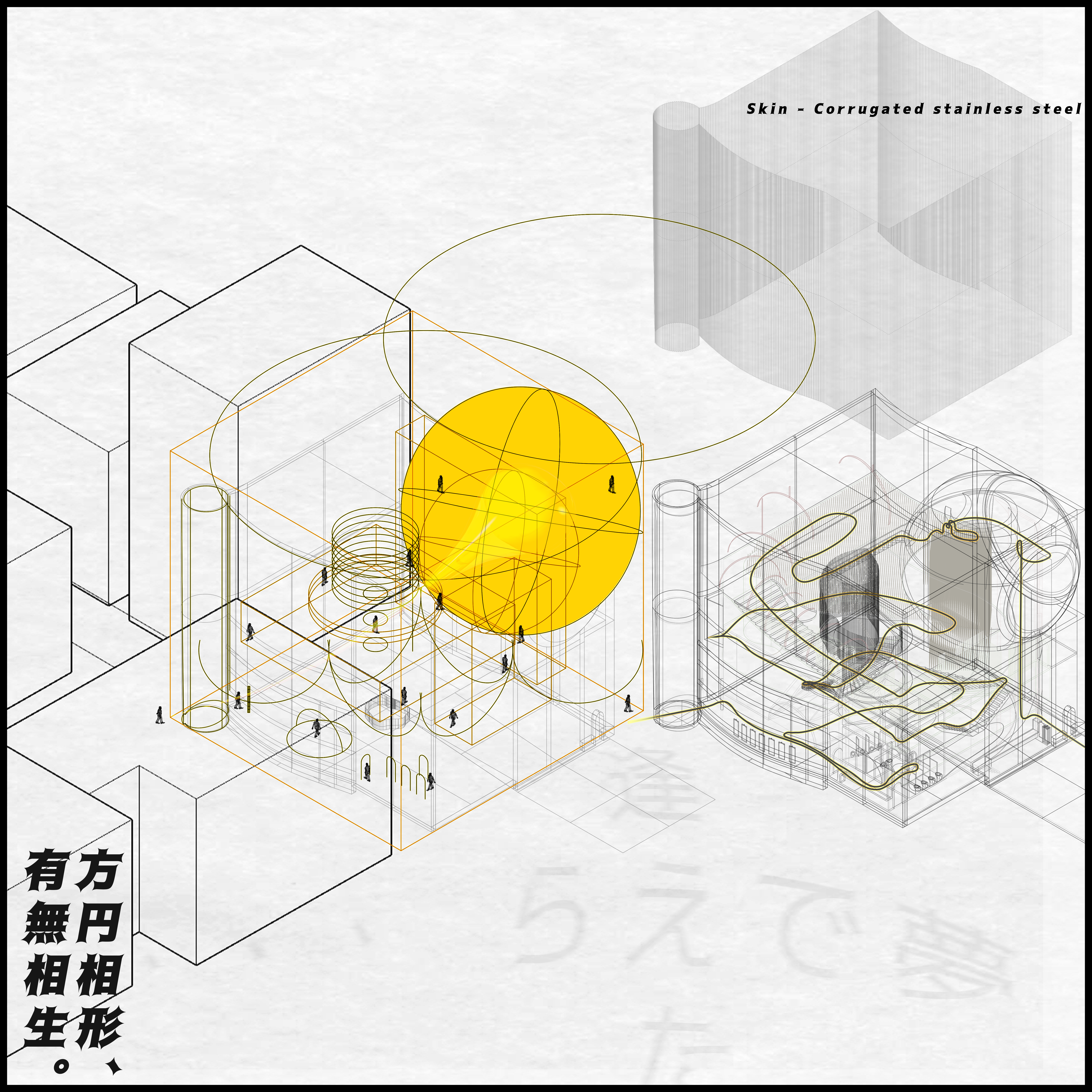
The architecture of the mind’s eye-
On the inside, it is a curated REM-dream-like experience of a series of 18 “rooms” through the space of “in-between”, blurring the boundaries between the real and the unreal and immersing visitors in a dimension between being and non-being.
Earlier studies of color synesthesia, brain cognitive functions, states of consciousness, and more have provided resources for architectural elements to take shape, generating dialogues among contradictions and creating an architectural experience that stimulates hyper-consciousness of one’s inner and outer environment.

